Red Knot, Kanoet, Knutt, Maçarico-de-papo-vermelho, Correlimos Gordo
Spotted in the Alentejo region of Portugal. Red Knot sound
The Red Knot, Calidris canutus (just Knot in Europe), is a medium sized shorebird which breeds in tundra and the Arctic Cordillera in the far north of Canada, Europe, and Russia. It is a large member of the Calidris sandpipers, second only to the Great Knot.

More photos at the bottom of this page.
Their diet varies according to season; arthropods and larvae are the preferred food items at the breeding grounds, while various hard-shelled molluscs are consumed at other feeding sites at other times. North American breeders migrate to coastal areas in Europe and South America, while the Eurasian populations winter in Africa, Papua New Guinea, Australia and New Zealand. This species forms enormous flocks when not breeding.
An adult Red Knot is the second largest Calidris sandpiper, measuring 23–26 cm (9–10 in) long with a 47–53 cm (18.5–21 in) wingspan. The body shape is typical for the genus, with a small head and eyes, a short neck and a slightly tapering bill that is no longer than its head. It has short dark legs and a medium thin dark bill. The winter, or basic, plumage becomes uniformly pale grey, and is similar between the sexes. The alternate, or breeding, plumage is mottled grey on top with a cinnamon face, throat and breast and light-coloured rear belly. The alternate plumage of females is similar to that of the male except it is slightly lighter and the eye-line is less distinct. canutus, islandica and piersmai are the “darker” subspecies. Subspecies rogersi has a lighter belly than either roselaari or piersmai, and rufa is the lightest in overall plumage. The transition from alternate to basic plumages begins at the breeding site but is most pronounced during the southwards migration. The molt to alternate plumage begins just prior to the northwards migration to the breeding grounds, but is mostly during the migration period.
The large size, white wing bar and grey rump and tail make it easy to identify in flight. When feeding the short dark green legs give it a characteristic ‘low-slung’ appearance. When foraging singly, they rarely call, but when flying in a flock they make a low monosyllabic knutt and when migrating they utter a disyllabic knuup-knuup. They breed in the moist tundra during June to August. The display song of the male is a fluty poor-me. The display includes circling high with quivering wing beats and tumbling to the ground with the wings held upward. Both sexes incubate the eggs, but the female leaves parental care to the male once the eggs have hatched.
Juvenile birds have distinctive submarginal lines and brown coverts during the first year. In the breeding season the males can be separated with difficulty based on the more even shade of the red underparts that extend towards the rear of the belly.
The weight varies with subspecies, but ranges between 100 and 200 g (45–91 oz). Red Knots can double their weight prior to migration. Like many migratory birds they also reduce the size of their digestive organs prior to migration. The extent of the atrophy is not as pronounced as species like the Bar-tailed Godwit, probably because there are more opportunities to feed during migration for the Red Knot. Red Knots are also able to change the size of their digestive organs seasonally. The size of the gizzard increases in thickness when feeding on harder foods on the wintering ground and decreases in size while feeding on softer foods in the breeding grounds. These changes can be very rapid, occurring in as little as six days.
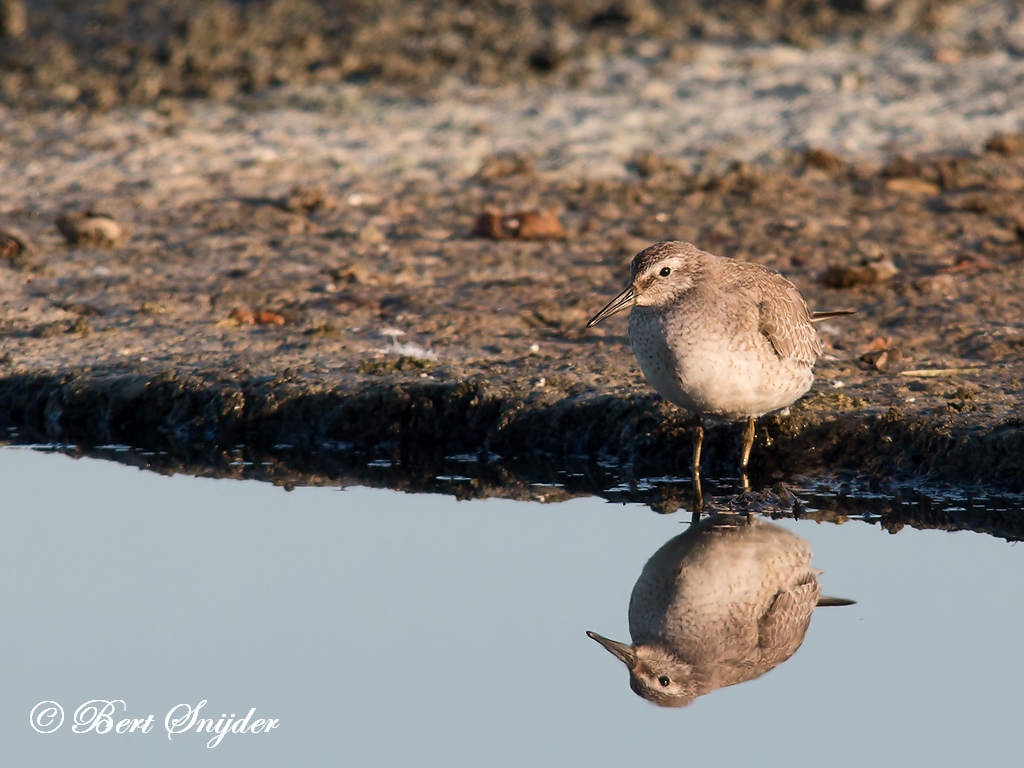
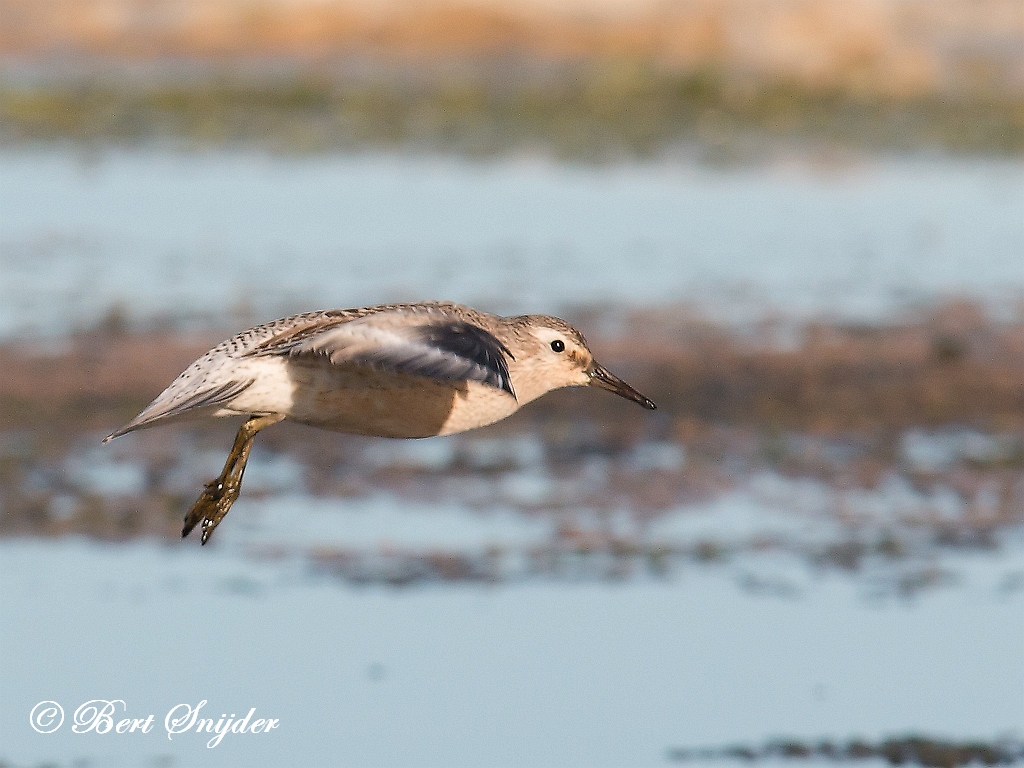
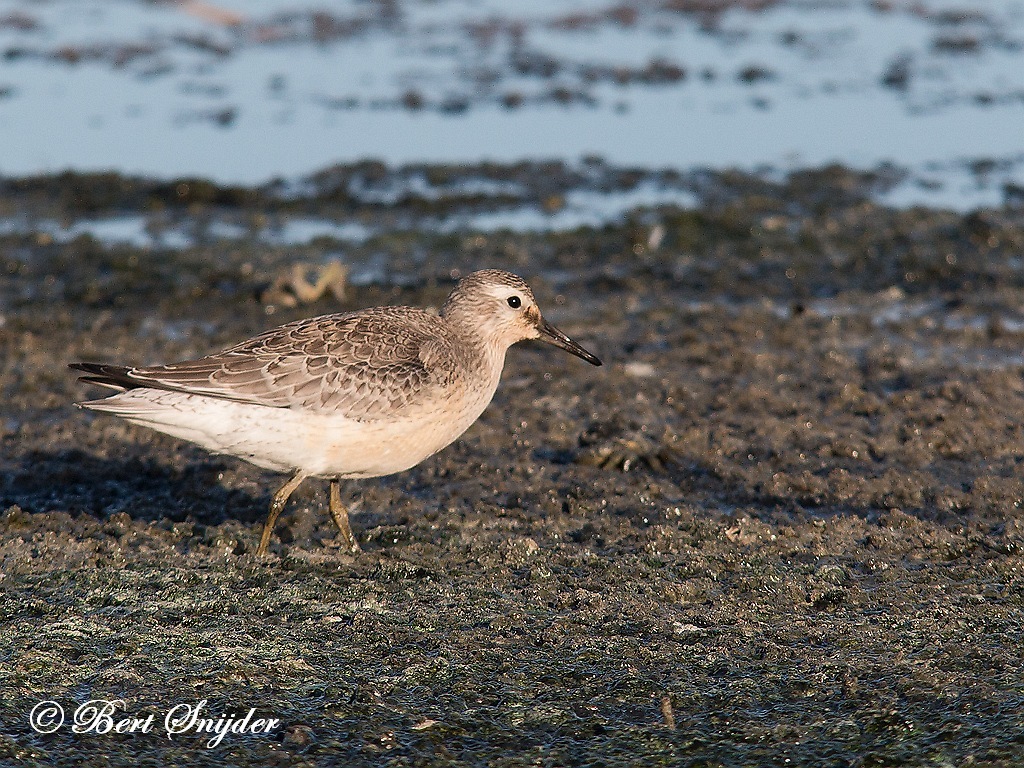

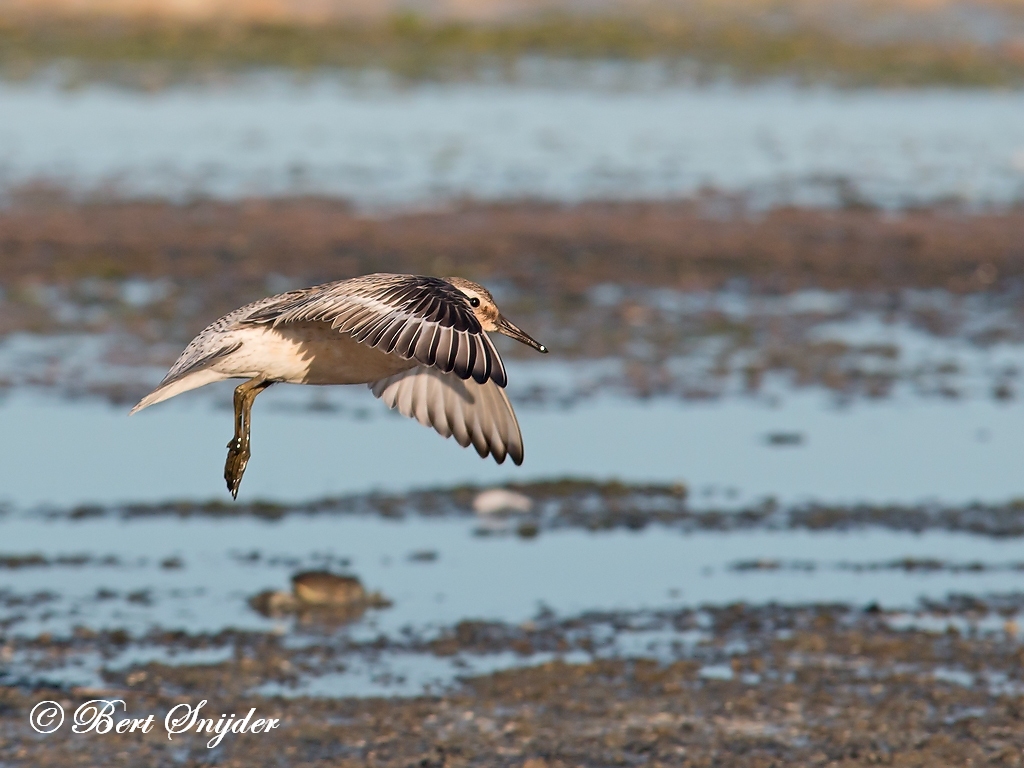

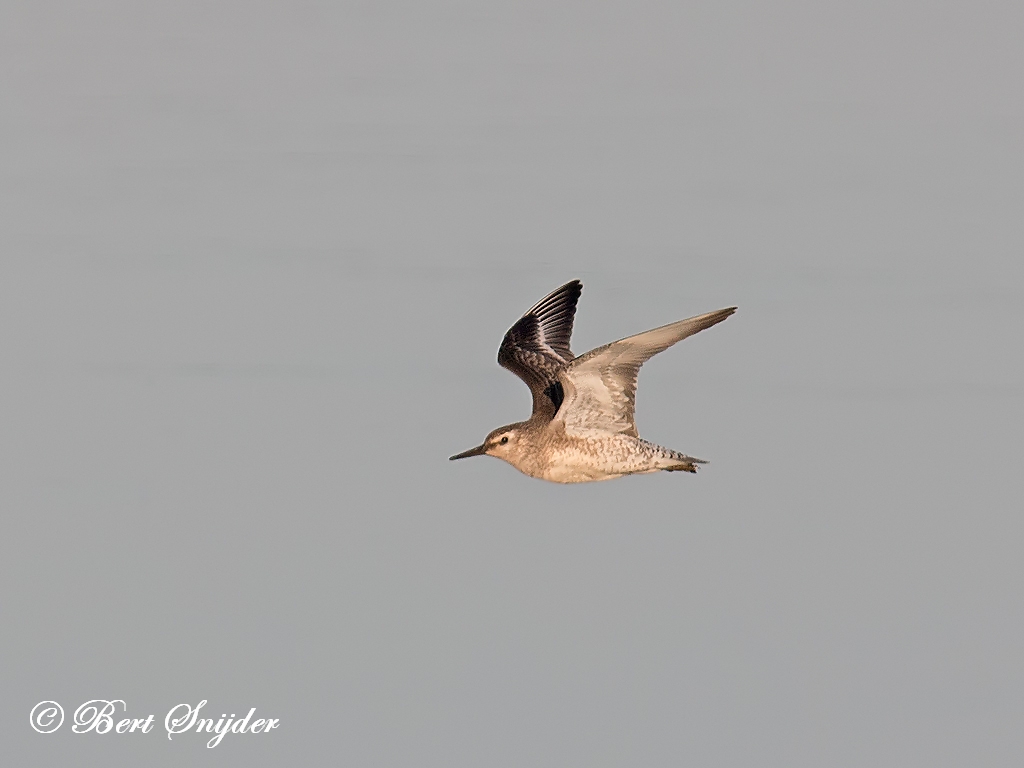
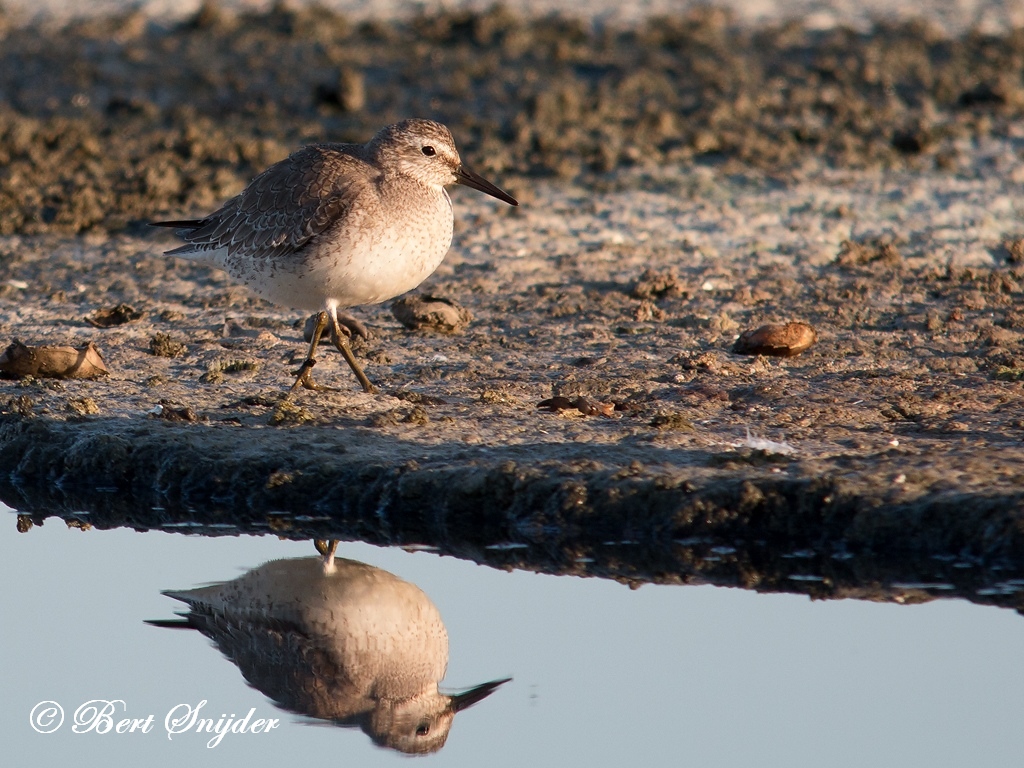

Other synonyms:
Afrikaans: Knoet
Asturian: Mazaricu Fartón, Mazaricu Gordu
Azerbaijani: Islandiya qumluq cüllütü
Breton: Ar sourouc’han morlerek
Catalan: Corriol gros, Territ gros, Territ pectoral
Catalan (Balears): Corriol gros
Valencian: Territ pectoral
Czech: Jespák rezavý
Welsh: Cnit, Cnut, Myniar y traeth, Pibydd glas, Pibydd yr aber
Danish: Islandsk ryle
German: Knutt
English: American Knot, Common Knot, European Knot, Grayback, Huahou, Knot, Lesser Knot, Red Knot, Red-breasted Sandpiper, Robin Snipe
Esperanto: granda kalidro
Spanish: Alzacolita pectoral, Chorlo Rojizo, Correlimos Gordo, Correlimos grande, Correlimos pechirrayado, Playerito pectoral, Playerito rojizo, Playero ártico, Playero Canuto, Playero Gordo, Playero Pechirrojo, Playero Pectoral, Playero Rojizo, Zarapico Raro
Spanish (Argentine): Playerito pectoral, Playerito rojizo, Playero Rojizo
Spanish (Chile): Playero ártico
Spanish (Colombia): Playero Rojizo
Spanish (Costa Rica): Correlimos grande, Correlimos pechirrayado
Spanish (Cuba): Zarapico Raro
Spanish (Dominican Rep.): Playero Pechirrojo
Spanish (Honduras): Alzacolita pectoral
Spanish (Mexico): playero canuto, Playero Gordo, Playero Pectoral
Spanish (Paraguay): Playerito rojizo
Spanish (Uruguay): Chorlo Rojizo, Playero Rojizo
Spanish (Venezuela): Playero Pecho Rufo
Estonian: Suurrisla, Suurrisla, suurrüdi , suurrüdi, suurrüdi (suurrisla), Suurrüdi e. suurrisla
Basque: Territ gros , Txirri lodi, Txirri lodia
Finnish: Isosirri
Faroese: Íslandsgrælingur
French: Bécasseau à poitrine rousse, Bécasseau maubèche
Irish: Cnota
Guadeloupean Creole French: Dos rouge
Gaelic: Luatharan Gainmhich
Galician: Pilro gordo, Territ gros
Guarani: Chululu’i
Manx: Coar ny traieyn
Haitian Creole French: Mòbèch
Croatian: Rdasti Žalar, Sivi žalar
Hungarian: Sarki partfutó
Indonesian: Kedidi Merah
Icelandic: Rauðbrystingur
Italian: Piovanello maggiore, Pivanello maggiore
Inuktitut: Qajorlak
Japanese: koobashigi, Ko-oba-shigi, Kooba-shigi
Greenlandic: Qajorlak
Cornish: Knut
Latin: Calidris canutus, Tringa canutus
Lithuanian: Islandinis begikas
Maori: Huahou
Malay: Kedidi Dian Kecil
Maltese: Girwiel Saqajh Qosra
Dutch: Kanoest strandloper, Kanoet, Kanoetstrandloper
Norwegian: Islandssneppe, Polarsnipe
Polish: biegus rdzawy
Portuguese: Batuira-de-peito-listrado, Macarico-de-colete, Macarico-de-papo-vermelho, maçarico-de-papo-vermelho, ruiva, Seixoeira, Sexoeira, vedeta-da-praia
Portuguese (Brazil): Batuira-de-peito-listrado, Macarico-de-colete, Maçarico-de-papo-vermelho, ruiva, vedeta-da-praia
Romansh: Rivarel grisch
Russian: Islandsky Pesochnik
Scots: Luatharan gainmhich
Slovak: Pobrežník hrdzavý, pobrežník malý
Slovenian: veliki prodnik
Albanian: Gjelëza e madhe
Swedish: Kustsnäppa
Swahili: Chokowe Mwekundu
Turkish: Büyük
Travel Birdwatching Holiday Alentejo, Vacation Portugal for birders to see birds on your trip. Guided Birdwatching Tours & Trips